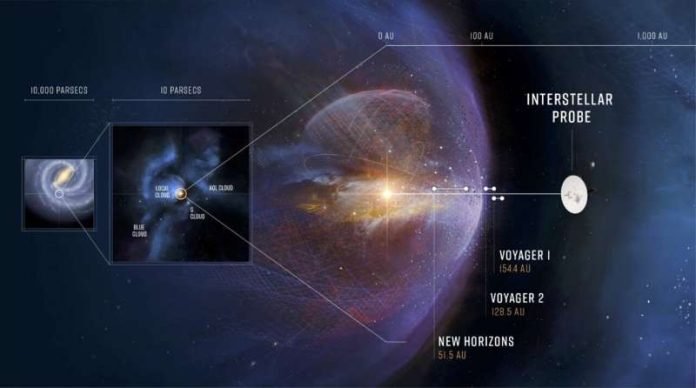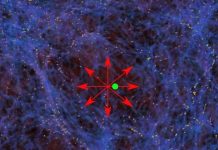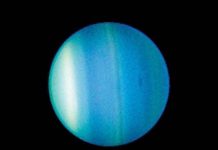
Imagine living in a house with a special shield that protects you from harmful things outside. Our solar system has something quite similar called the heliosphere.
This shield is made from the solar wind, a kind of breeze of charged particles that the Sun blows out, and the interplanetary magnetic field.
Together, they create a protective bubble around our solar system, keeping out dangerous cosmic rays that come from explosive events in the galaxy, like supernovas.
However, scientists are still trying to figure out exactly how big this bubble is and what it looks like. They’re thinking about sending a special probe on a journey beyond the Sun’s influence to get a good look from the outside.
A team of researchers led by the University of Michigan has been working on how to make the most out of this journey. They compare us to goldfish trying to understand the bowl we’re in from the inside.
To really know how this heliosphere keeps us safe from galactic radiation, we need to step outside and take a look back.
The big question is: how do we get out? The study suggests the best path is through the side, near the tail end of this protective bubble. The heliosphere’s interaction with what’s outside it, a mixture of plasma, dust, and particles called the local interstellar medium, gives it its shape.
Some think it might be round, others believe it’s stretched out or even crescent-shaped. The only way to know for sure is to make measurements from outside.
So far, the Voyager 1 and 2 spacecraft, launched way back in 1977, are the only ones to have maybe left this bubble. But they’re old now and can’t send back all the information scientists need.
The idea is to send a new probe far beyond the heliosphere to collect bits of the local interstellar medium.
A big discussion with over a thousand scientists involved looked at what this probe should carry, how to launch it, and where exactly it should go. They thought the best path was about 45 degrees off the front direction of the Sun’s travel.
But challenging this idea, the research team thinks a different route, going more towards the side and back, would give a better view of the heliosphere’s shape and collect more valuable science.
To understand this better, imagine wanting to know how long your house is. If you just walk out the front door and look from the street, you won’t get the whole picture. But if you step out the side door, you can see the length from front to back much better.
They also think this path might let the probe sample plasma that’s come into the heliosphere from the outside, offering a unique chance to study how our solar system interacts with the rest of the galaxy.
This work is important for understanding our place in the universe. It’s like mapping out our cosmic neighborhood to see how we fit into the bigger picture.
The Voyager missions have already traveled a staggering distance, but the future interstellar probe could go much farther, giving us a whole new perspective on our heliosphere and beyond.
Copyright © 2024 Knowridge Science Report. All rights reserved.



